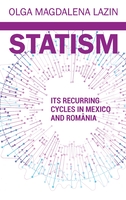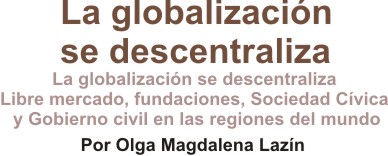

SERIES NUMBER TWO in the United States of America, Romania and Mexico is a state of the art analysis of cycles and trends of civic polity in three countries.
Now we are focusing on regions of Transylvania, and napoli, Sonora, Mexico. It is well known that the United States of America is the country that has the largest pool of Not-For-Private-Profit money in the world.
My thirty years experience with PROFMEX, the Consortium for Global Research in Los Angeles, California has shown me that the bigger picture of the civic society and philanthropic sectors is much more complicated and I decided to write about the interaction between the actors playing a big role in civil society in the USA (people like George Soros, Bill Gates, and CNN ex-owner and media mogul Ted Turner.
Zeroing into the real confusion that exists in the United States, about the definition of societal sectors comes when analysts fail to take into account the role of the Mixed state/private sector, which for so many years has come to provide a “theoretical bridge” between government and the private business, especially in England and the USA, as well as to keep inefficient and corrupt statism in power, especially in Latin America and Eastern Europe.
The Non-profit -sector mislabeling process, as the third sector of the society, has its roots in Latin America: given the “third-way” ideology espoused by diverse leaders in different times (for example, Juan Domingo Perón in Argentina in the 1940s) and England’s Tony Blair (1990s), such a concept is not helpful because it is by now empty of meaning. Therefore I distinguish between actually four society sectors: Private, State Sector, the mixed State and Private sector, and finally the fourth, the Not-For-private-Sector, also known as the NGOs. The picture is suddenly much more complicated, and we analyze here how these four sectors of the society interact with one another, and how intertwined they are in reality. I seek hereby to show in a new light the relation of the profit and not for-private-profit sectors, the latter funded by the former.
Further, I develop new analysis here to help citizens everywhere to understand the roles of government, which must include the study of GONGOs (governmentally organized NGOs), QUANGOs (quasi-autonomous NGOs) as well as to understand that "non-profit organization" does not preclude such organizations from earning profits but rather require that the profits must be used for the purposes chartered and not for private gain. With regard to the meaning of words, one final statement is in order. I do not use the word “public” per se because it has two distinct meanings.
For formerly statist societies, “public” means government or government-owned. For non-statist societies such as the USA, the word’s meaning depends on context: “broad general public,” in the context of philanthropic analysis; “public utility” owned or regulated by the government, in the context of economic analysis. Hence in discussion here I discuss foundations as “broadly supported by the general public”; and I do not use “public foundation” which could give the idea of government-owned foundation.
America operates with the advantage of being able to enact one standard law for Non-Profit Organizations (NPPOs) whereas the EU is only beginning to do so in such areas as taxation and pensions and has been unable to do so at all for NPPOs, where 25 national legal standards prevail to this day. No wonder, Britain sought to exit in 2017 and is still trying to get out from the bureaucratic quagmire that the European Union has been this past 10 years following the Brit-exit. It is, therefore, possible, or much easier for the U.S. to permit and sees it as healthy, encouraging the transfer of funds.

Statism, Its Recurring Cycles in Mexico and Romania is focused on governance and its pitfalls. This exhilarating book provides a political and economic analysis of the historical "recurring cycles" of Statism in Mexico and Romania. The cycle is starting with the Aztec Empire. The author focuses on these countries as prime examples of states that have "been experimenting with statism and state corporatism."
Ms. Lazin identifies the cycles of Statism that begins with a period of nation building, in Mexico, and brings it up to present, with cycles of anti-statism, and state intervention, as well as complications with the military. General Genario Luna' work with narcotraficantes while being the head of the FBI, is being analyzed. That explains statist enterprise, and presidential involvement of the past 4 presidents in mixing the governmental, and governance culture with the narco-state leadership.
In Romania, by contrast, the state owned everything (see GDP data), and so did the socialist Party, and only started privatizing the past 3 decades, after the fall of the Berlin Wall. Central planning went on for 45 years in Romania.
The Binom and the deep state are relevant pitfalls of the Securitate-driven governance in Romania, at the apex of statism in 2021. The amparo prevalent in the Mexican legal system, proves how one can get away with murder, if the amparo is being paid.

Año 2007
Indice General
Palabras preliminares
Prólogo de James W. Wilkie
Prefacio. Gobierno civil, Sociedad Cívica y libre comercio
versus el legado negativo del estatismo: cuatro modelos
1. De la globalización gradual a la globalización de vía rápida.
Libre comercio, comunicación abierta, Sociedad Cívica
2. Nacimiento del modelo filantrópico estadounidense y
redefinición de su significado y sus variantes
3. La centralizada Fundación Rockefeller y América Latina
4. Las naciones entran en bloques de libre comercio
5. Surgimiento del modelo descentralizado estadounidense
de filantropía.
6. Estudios de caso de filantropía y globalización: México y
Romania después de 1945
Epílogo
Conclusión en marcha
Apéndice A. Etapas de la globalización desde 1565 (el comienzo
de la ruta Sevilla-Veracruz-Acapulco-Manila) hasta 1989-1991
(durante las guerras URSS-Afganistán e Irak-Irán)
Bibliografía
Siglas y acrónimos
Índice de cuadros, gráficas y mapas
Libro de regalo

.: Descargar Libro completo :.